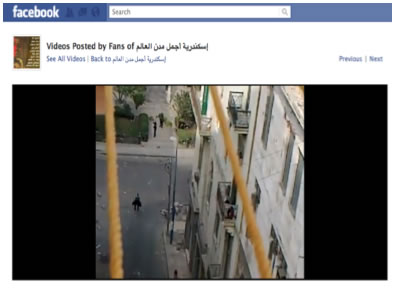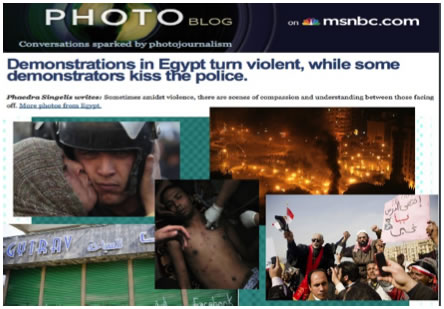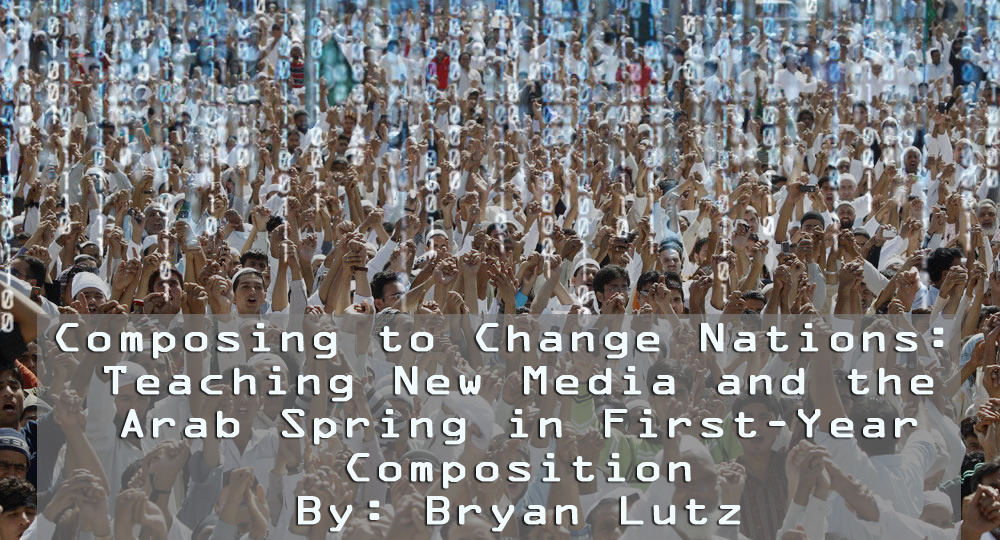The Arab Spring: Revolutions in Tunisia and Egypt
Visibility
And this happens over and over in the revolutions of Tunisia and Egypt. The affordances of Facebook and Twitter allow the spread of information at an accelerated rate. The protesters then used new media to coordinate their efforts on the ground. Twitter especially was used to tell people where to meet or where to protest, and this was likely the fastest and cheapest way for people to be informed about the movement. In Tunisia internet access by mobile phone is cheaper than a land line phone, and many younger citizens are able to access the internet through cybercafes which can also bypass many of the countries restrictions on internet access (voanews). By comparison, Egypt has the greatest internet infrastructure in North Africa and has a still growing number of internet subscribers. This kind of environment encourages cell phone use, and Facebook and Twitter are common applications on all mobile phones, making it extremely likely that protesters could use these technologies for the reasons claimed by journalists.
For protesters in the field, new media allows the rapid share on information. For example, the video below shows a man in Egypt who approaches Egyptian Police officers while unarmed. The video below is shocking; It shows a defenseless man being shot to death:
 |
| This is the video as it appears on Facebook |
He drops his jacket to show that he is unarmed, but police respond by moving in close before gunning him down. Like the image of Bouzizi, this video is posted on Facebook and shared with multiple users, making it visible to many involved in the movement. In the comments section below the video, Facebook users post their outrage at the atrocities of the Egyptian police while people on Twitter send each other links to the video. If we apply the civic voluntarism model with affordances of new media in mind, we see that people were able to address that they are unsatisfied with the political climate of their countries, as the atrocities against people are made public and spread quickly and effectively across these networks. And there is also some composition involved. Members of Facebook, many of whom live in Egypt, viewed the video and posted comments that asked for mercy, expressed anger at the Egyptian police, and some even wrote prayers for the man who lost his life. In this way new media communication more closely resembles a nervous system than a printing press. Here the body of the Egyptian citizenry is able to identify dangers within the zeitgeist and channel that message in concert with one another—a unity achieved and maintained for the cause of justice and through new media affordances.
 |
| A photoblog on MSNBC.com (modified) |
And the audiences for these compositions are not limited to the people of Tunisia and Egypt. Natalie Fenton (2008) in her article “Mediating Hope” argues that with the advent of new media, non-governmental organizations are able to reach across borders to nations with access to only limited resources (pp. 233). Her assertion seems valid in the materiality of these revolutions. Not only do the social networking sites Facebook and Twitter allow people to reach each other anywhere in the world that has internet access, but the information shared reaches news media like Al Jazeera and MSNBC who then use blogs and news articles to bring international attention to the killing of unarmed protesters. Many of the protesters practiced non-violent resistance in response. The affordances of these medias allowed them to combat force with increased visibility and velocity as the protesters spread the narrative of unarmed protesters facing armed opposition in Tunisia and Egypt between themselves and across the world. This put these governments under extreme pressure quickly by prompting world leaders like US president Barack Obama to encourage Ben Ali of Tunisia to cease any violence against political dissidents, and by asking Mumbarack of Egypt to hold new elections so that the people of Egypt can participate in how they are governed.
